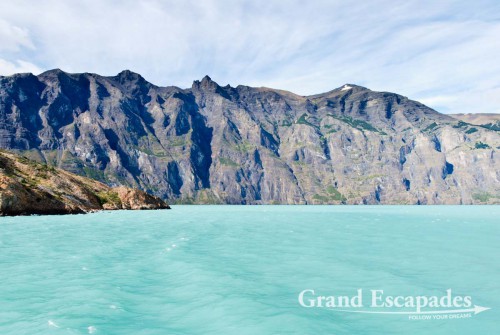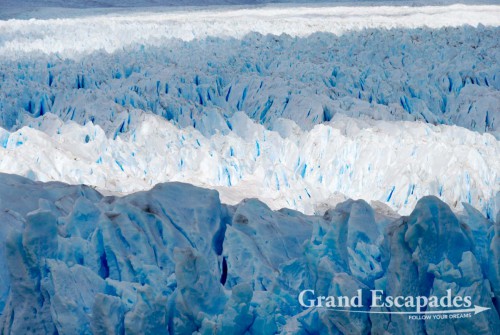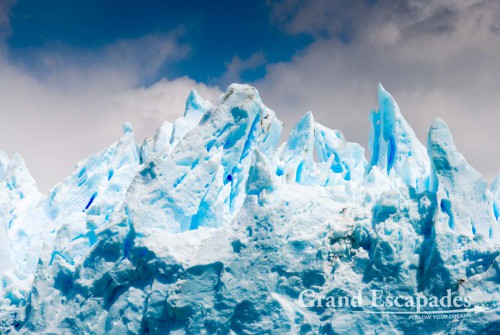The reason why glaciers can be found at such a low altitude here has to do with the special climatic situation. Due to the moist-laden clouds coming in from the Pacific, an average of 30 meters of snow fall in this part of the Andes. As more snow builds up over the years and the pressure increases, the snow turns into ice. That extra weight forces the glacier to move downhill. The terrain it moves along is not plain and smooth, so the ice cracks and develops bizarre deformities, called crevasses. It is these wild forms and the various shades of blue that make glaciers such subjects of awe. Add the milky green waters of the glacier lakes, blue skies, snow-capped mountains in the background and green trees growing all the way down to the lake, you have the perfect tourist attraction.
The green color of the glacier lakes is due to the sediments in the water: The moving ice grinds up the rocks. These particles mix with the melting water and give it its specific color. The various shades of blue of the ice depend on how compact the ice is. The more compact, the longer the path of the light has to travel and the bluer the ice appears.

Lago Argentina with its milky, green water, Parque Nacional De Los Glaciares, El Calafate, Argentina
Although not the biggest, Perito Moreno is without doubt the most famous glacier in the Parque Nacional Los Glaciares. Why?
Firstly, it is the only glacier that is not receding. The area where the ice is building makes up 70% of the glacier’s surface, whereas the ablation area, the part where the glacier is melting, represents only 30% of it. Other glaciers, like the Glaciar Upsala, have a ratio of 50% to 50%.
Secondly, it is very easy to visit. The viewing platforms start only a few meters away from the general car park. These provide an excellent view of the glacier from several angels and at different levels.
Last but not least, it is famous for large pieces of ice breaking off and the famous “La Raptura”. This spectacle happens normally every 4 to 6 years when the glacier advances so far that is reaches Peninsula Magallanes, thus creating a dam in that small passage between Lago Argentino and one of its arms, the Brazo Rico. Since Brazo Rico has no outlet for the melting glacier water, like Lago Argentino has in Rio Cruz, the water level in Brazo Rico rises. Once the difference between Lago Argentino and its “appendix” Brazo Rico has reached 17 meters, the barriers of ice can no longer withstand the pressure of the water from Brazo Rico and breaks down. This spectacle for the eye and the ear is called “La Raptura”. The last one was in March 2004 and the next one is expected for 2008, probably also in March.



No comments yet.